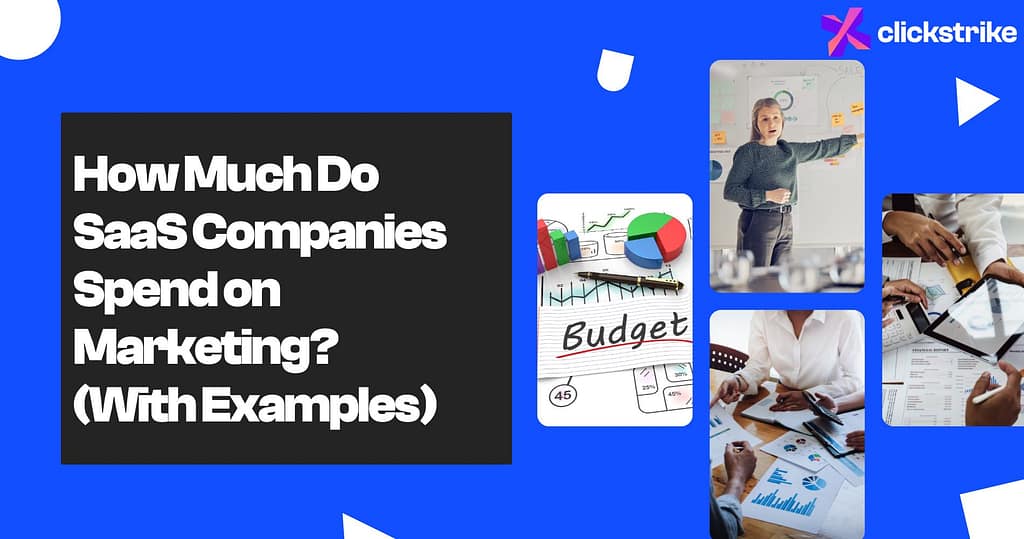Marketing plays a crucial role in the success of SaaS (Software as a Service) companies, helping them increase brand visibility, attract leads, and drive customer acquisition. However, determining the appropriate marketing budget can be challenging, especially for SaaS startups or businesses with limited resources. In this comprehensive guide, we’ll explore how much SaaS companies typically spend on marketing and provide practical insights to help you establish an effective marketing budget tailored to your specific business.
Overview of SaaS Marketing Budgets
To understand the spending patterns of SaaS companies, it’s essential to consider various factors, including the company’s size, growth stage, target market, and competitive landscape.
While there is no one-size-fits-all answer, let’s examine general trends and benchmarks observed in the industry:
Marketing Budget as a Percentage of Revenue
SaaS companies often allocate a percentage of their revenue to marketing activities. According to industry studies, established SaaS businesses typically spend around 10-20% of their annual revenue (or ARR) on marketing.
However, Jason Lemkin, SaaS influencer and advisor to the popular SaaS publication SaaStr, says the number is closer to 40% of revenue.
However, it’s important to note that startups and high-growth companies might allocate a higher percentage to fuel rapid expansion.
Industry and Competition
Marketing budgets can vary significantly depending on the industry and level of competition. SaaS companies operating in highly competitive markets may need to allocate more resources to differentiate themselves, capture market share, and maintain growth.
Growth Stage
The growth stage of a SaaS company plays a critical role in determining marketing budget allocation. Startups in the early stages might need to invest a larger portion of their budget to create awareness and generate initial traction. As the company matures and achieves a more predictable revenue stream, the focus might shift toward customer retention and expansion.
Examples of SaaS Marketing Budgets (By Size)
To provide a practical understanding of SaaS marketing budgets, let’s examine examples based on different revenue ranges:
Startups and Early-Stage SaaS Companies
For startups with less than $1 million in annual revenue, allocating 20-30% of revenue to marketing is common. This budget helps establish brand presence, create awareness, and generate initial leads through content marketing, social media, and targeted online advertising.
Example: Company X, a SaaS startup with $500,000 in annual revenue, sets aside $100,000 (20% of revenue) for marketing activities. They focus on content creation, social media marketing, and targeted email campaigns to build brand visibility and generate leads.
Mid-Size SaaS Companies
SaaS companies with revenue ranging from $1 million to $10 million generally allocate 10-20% of their annual revenue to marketing efforts. At this stage, the focus shifts toward lead generation, demand generation, and sales enablement through a mix of inbound and outbound marketing strategies.
Example: Company Y, a mid-size SaaS business with $5 million in annual revenue, allocates $750,000 (15% of revenue) to marketing. They invest in content marketing, SEO, paid advertising, industry events, and partnerships to expand their customer base and support sales initiatives.
Established and High-Growth SaaS Companies
As SaaS companies mature and generate over $10 million in annual revenue, marketing budgets typically range from 10-15% or more.
At this stage, the focus expands beyond lead generation to include customer retention, upselling, and cross-selling through account-based marketing (ABM) strategies, customer success initiatives, and targeted campaigns.
Example: Company Z, an established SaaS enterprise with $50 million in annual revenue, sets aside $7.5 million (15% of revenue) for marketing.
They allocate resources to content marketing, ABM, customer advocacy programs, event sponsorships, and strategic partnerships to drive revenue growth and foster customer loyalty.
Determining Your SaaS Marketing Budget
While the examples provide insights, tailoring your marketing budget to your specific situation is essential. Here are key considerations to help you determine your SaaS marketing budget:
Revenue and Growth Goals
Evaluate your revenue projections and growth objectives. Assess the level of growth you aim to achieve and align your marketing budget accordingly. As a general guideline, allocating 10-20% of projected revenue to marketing is a good starting point.
Competitive Landscape
Analyze your market competition and industry benchmarks. If your target market is highly competitive, you may need to allocate additional resources to differentiate your brand and capture market share.
Customer Acquisition Costs (CAC)
Calculate your customer acquisition costs by dividing your total marketing and sales expenses by the number of customers acquired within a specific period. This metric provides insights into the effectiveness and efficiency of your marketing efforts. Use it to refine your budget allocation and optimize your customer acquisition strategies.
Stage of Growth
Consider your company’s growth stage. Startups and early-stage companies may prioritize brand awareness, while more mature businesses might emphasize customer retention and upselling. Align your marketing budget with the growth stage to support your strategic goals.
Experimentation and Optimization
Allocate a portion of your budget for experimentation and optimization. Testing new channels, tactics, and technologies can help uncover more efficient and effective marketing approaches. Continuously evaluate and reallocate funds based on the performance and ROI of various marketing initiatives.
Conclusion: What’s the Right SaaS Marketing Budget For You?
Establishing an effective marketing budget is crucial for SaaS companies to achieve sustainable growth.
By considering factors such as revenue, growth goals, competition, and growth stage, you can determine an appropriate budget allocation. While industry benchmarks provide guidance, remember that every company’s situation is unique.
Regularly monitor and evaluate the performance of your marketing efforts to optimize your budget allocation and adapt to changing market dynamics.
By aligning your marketing budget with your strategic goals and continuously refining your strategies, you can position your SaaS company for long-term success.
Looking for help? Try Clickstrike, an agency built for SaaS companies.

 Book A Call
Book A Call